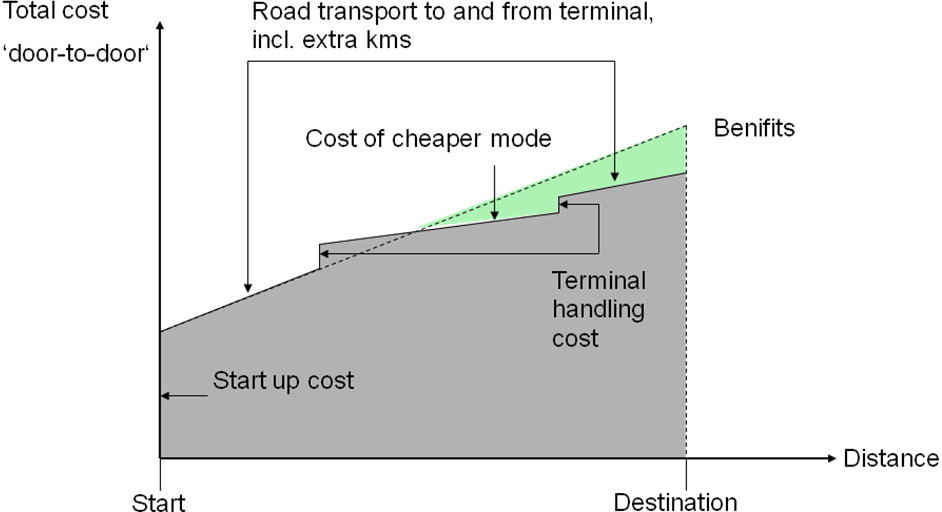|
Definition of intermodal transportation
-Written
by Frederic Krehl
Intermodal transport is defined in scientific literature in several different ways. To predict misunderstandings and to ease it to follow the case study it is necessary to agree on one single
definition of intermodal transport. According to Jones, Cassady and Bowden (n.d. p. 8) the most suitable definition is the
following one: Intermodal transportation is “the shipment of cargo and the movement of people involving more than one
mode of transportation during a single, seamless journey”
Types of intermodal transportation
Talking about intermodal transportation with modes of transport usually the four main ways of moving
road, rail, sea and air are mend. In some resources additionally the pipeline is also mentioned as a fifth mode of transportation.
Because pipelines haven’t any influence or connection to the presented case study this mode can be disregarded in this
case.Based on the four main modes of transportation several combinations are possible. Figure 1 illustrates the possible combinations.

|
| Figure 1: Combinations of modes of transport |
Why intermodal transportation?
Each mode of transportation has its advantages and disadvantages towards the others. In general intermodal transportation
tries to combine the advantages of two or more modes of transportation. For example is the transport over sea relatively cheap
in comparison with transport over road whereas the accessibility to roads is by far better than this to a harbour. Table 1
gives an overview over the advantages and disadvantages of the different modes of transportation based on the criteria’s
mentioned by Ballou (1992).
|
Table 1: Modes of transport according to criterion |
|
|
Road |
Rail |
Water |
Air |
|
Speed |
2 |
3 |
4 |
1 |
|
Accessibility |
1 |
2 |
4 |
3 |
|
Reliability |
1 |
2 |
3 |
4 |
|
Versatility |
3 |
2 |
1 |
4 |
|
Frequency |
1 |
3 |
4 |
2 |
|
Risk of damage |
3 |
4 |
1 |
2 |
|
Cost |
3 |
2 |
1 |
4 |
|
Score: |
1 = best alternative -----4 = worst alternative |
The decision for or against a combination of modes of transport is mainly based on the factor cost.
With other words, if the way of transportation will be modal or intermodal depends on the potential of saving money. Intermodal
transport is always related to additional costs for handling and transhipment from one mode to another. Simplified, intermodal
transportation will be used if this additional cost can be covered by the benefits gained through the second or tired mode
of transportation. This can be a faster, a more reliable or just a cheaper mode of transportation. Figure 2 illustrates that
covering the transhipment costs for switching from one mode of transportation to a cheaper one only gains financial advantages
after a certainty distance.

|
| Figure 2: Benefits and disadvantages of modal vs. intermodal transport (van Goor, Ploos van Amstel, |
References
- Bowden, RO,
Cassady, CR, Jones, WB, n.d., Developing a Standard Definition of Intermodal Transportation
- Ballou, R.H.
(1992), Business logistics management, England Cliffs, NJ: Prentice Hall Inc.
- Van Goor, AR,
Ploos van Amstel, MJ & Ploos van Amstel, W (2003), European distribution and supply chain logistics, Stenfert Kroese,
Groningen
|

